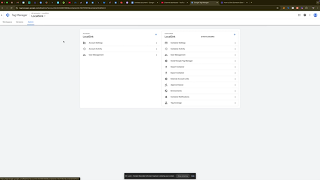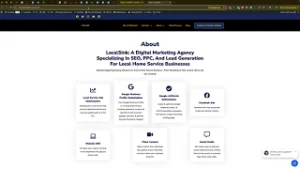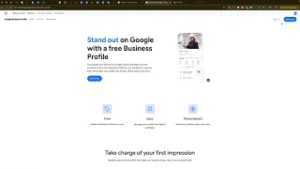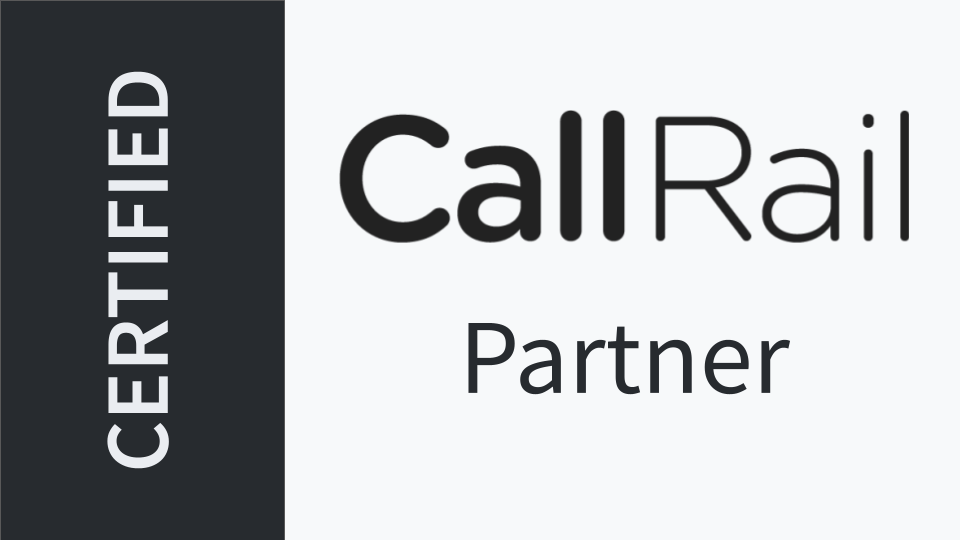Collaborating effectively is essential for managing and optimizing your website’s tracking and analytics. Whether you’re working with an agency, hiring a marketing specialist, or coordinating with team members, granting access to your Google Tag Manager (GTM) account allows others to manage tags, triggers, and variables efficiently. In the “How to Add Users to Your Google Tag Manager Account” video, you learn a straightforward method to provide access using GTM’s built-in user management features. This comprehensive guide will expand on those instructions, offering detailed steps, best practices, and additional insights to ensure secure and effective management of your GTM account.
Why Granting Access to Your Google Tag Manager Account Matters
Providing access to your GTM account enables collaboration, streamlines workflow, and enhances your website’s tracking capabilities. Here’s why it’s crucial:
Enhanced Collaboration
Allowing multiple users to manage your GTM account fosters teamwork and ensures that tracking implementations are handled efficiently. Whether you’re delegating tasks or working together on tag configurations, shared access facilitates seamless collaboration.
Efficient Tag Management
With multiple users managing tags, triggers, and variables, you can maintain an organized and optimized tagging structure. This efficiency is vital for businesses that rely on accurate data collection for marketing and analytics.
Scalability
As your business grows, so does the complexity of your tracking needs. Granting access to additional users allows you to scale your GTM setup without overburdening a single individual, ensuring that your tracking infrastructure evolves with your business.
Security and Control
Google Tag Manager’s user management features provide granular control over who can access and modify your tags. By assigning appropriate permissions, you can safeguard your data and maintain the integrity of your tracking setup.
Step-by-Step Guide to Adding Users in Google Tag Manager
Follow these detailed steps to securely add users to your Google Tag Manager account, whether at the account level or within specific containers.
Step 1: Sign In to Your Google Tag Manager Account
- Access Google Tag Manager:
- Navigate to Google Tag Manager and sign in with your Google account credentials associated with your GTM account.
- Select Your Account:
- If you manage multiple accounts, select the one you want to grant access to from the list of available accounts.
Step 2: Navigate to Admin Settings
- Open Admin Panel:
- In the top-right corner of the GTM dashboard, click on the Admin gear icon to access the administrative settings.
Step 3: Grant Access at the Account Level
Granting access at the account level provides the user with permissions across all containers within the account.
- Access Account User Management:
- In the Account column (the first column), click on User Management.
- Add a New User:
- Click on the + button (often labeled as “Add”) in the top-right corner.
- Select Add Users from the dropdown menu.
- Enter User Details:
- Input the email address of the person you want to grant access to. Ensure it is a Google account email.
- Assign Permissions:
- Choose the appropriate permission levels:
- Administrator: Full access, including managing users and account settings.
- User: Can manage tags, triggers, and variables but cannot manage user permissions.
- Choose the appropriate permission levels:
- Configure Container Permissions:
- Decide whether to grant access to all containers within the account or specific ones.
- For comprehensive management, select All Containers. To restrict access, choose specific containers.
- Send Invitation:
- Click Invite to send the access invitation. The invited user will receive an email notification to accept access.
Step 4: Grant Access at the Container Level
If you prefer to grant access to a specific container within your GTM account, follow these steps:
- Select Container:
- In the Container column (the second column), select the container you want to grant access to.
- Access Container User Management:
- Click on User Management under the selected container.
- Add a New User:
- Click on the + button (often labeled as “Add”) in the top-right corner.
- Select Add Users from the dropdown menu.
- Enter User Details:
- Input the email address of the person you want to grant access to. Ensure it is a Google account email.
- Assign Permissions:
- Choose the appropriate permission levels:
- Administrator: Full access, including managing users and container settings.
- User: Can manage tags, triggers, and variables but cannot manage user permissions.
- Choose the appropriate permission levels:
- Send Invitation:
- Click Invite to send the access invitation. The invited user will receive an email notification to accept access.
Step 5: Confirm and Manage Access
- Verify Invitations:
- Ensure that the invited users have accepted the invitations by checking the User Management sections for both account and container levels.
- Adjust Permissions if Needed:
- To change a user’s permission level, click on their name and select a different role from the dropdown menu.
- Remove Users:
- To revoke access, click the three-dot menu next to the user’s name and select Remove.
Best Practices for Granting Access
Implementing best practices ensures that granting access to your GTM account is secure, efficient, and beneficial for your business.
Define Clear Roles and Responsibilities
- Assess Needs: Determine what tasks each user needs to perform and assign roles based on their responsibilities.
- Avoid Overlapping Duties: Clearly define each user’s role to prevent confusion and ensure accountability.
Limit Access Based on Necessity
- Principle of Least Privilege: Grant only the access necessary for users to perform their tasks. Avoid assigning higher permissions than required.
- Regularly Review Permissions: Periodically audit user access to ensure that permissions are still appropriate and revoke access for users who no longer need it.
Maintain Security
- Use Strong Passwords: Ensure that all users have strong, unique passwords for their Google accounts.
- Enable Two-Factor Authentication (2FA): Add an extra layer of security by enabling 2FA for all accounts with access to your GTM.
- Monitor Account Activity: Regularly check the User Management sections for any unusual activity or unauthorized access.
Communicate Effectively
- Provide Guidelines: Share clear guidelines on how users should interact with the GTM account to maintain data integrity and consistency.
- Foster Collaboration: Encourage open communication among team members to streamline workflows and address any issues promptly.
Utilize GTM Features
- Use Workspaces: Leverage GTM’s workspaces to manage changes and collaborate without interfering with each other’s work.
- Implement Version Control: Regularly create versions of your container to track changes and revert to previous configurations if needed.
Common Mistakes to Avoid
Avoiding these common pitfalls can enhance the effectiveness and security of granting access to your GTM account.
Granting Excessive Permissions
- Impact: Assigning higher permissions than necessary can lead to unauthorized changes or misuse of your tracking setup.
- Solution: Carefully evaluate the access level required for each user and assign roles accordingly.
Neglecting to Update Permissions
- Impact: Failing to update permissions when roles change or when users leave can compromise your account’s security.
- Solution: Regularly review and update user permissions to reflect current team structures and responsibilities.
Overlooking Security Measures
- Impact: Inadequate security can expose your tracking setup to potential threats.
- Solution: Implement robust security practices, including strong passwords and 2FA, to protect your account.
Poor Communication
- Impact: Lack of clear communication can lead to misunderstandings and inconsistent tag management.
- Solution: Establish clear communication channels and provide comprehensive training and guidelines for all users.
Ignoring Analytics Insights
- Impact: Failing to utilize the data collected can result in missed opportunities for optimizing your website and marketing strategies.
- Solution: Encourage users to actively engage with the analytics data and use it to inform decision-making processes.
Frequently Asked Questions
Can I Grant Access to Multiple People at Once?
Yes, you can invite multiple users by repeating the invitation process for each individual. However, manage invitations carefully to maintain control over who has access to your GTM account.
What Are the Different Permission Levels?
- Administrator: Full access, including managing users and account/container settings.
- User: Can manage tags, triggers, and variables but cannot manage user permissions.
How Do I Remove Someone’s Access?
- Navigate to Admin > User Management for either the account or container level.
- Find the User: Locate the user you want to remove.
- Remove Access: Click the three-dot menu next to their name and select Remove.
Do Users Need a Google Account to Access My Tag Manager?
Yes, users must have a Google account to accept an invitation and access your GTM account or container.
Can I Change a User’s Permission Level After Granting Access?
Yes, you can adjust a user’s permission level at any time by navigating to User Management, clicking on the user’s name, and selecting a new role.
Maximizing the Impact of Granted Access
To fully leverage the benefits of granting access to your GTM account, integrate these strategies into your broader marketing and operational plans.
Align with Your Marketing Goals
- Define Clear Objectives: Identify what you want to achieve with your GTM setup, such as improving tracking accuracy, enhancing data collection, or optimizing marketing campaigns.
- Tailor Tracking to Goals: Set up specific tags, triggers, and variables in GTM that align with your marketing objectives to capture the most relevant data.
Use Data to Optimize Campaigns
- Analyze Tag Performance: Regularly review the performance of your tags to ensure they are firing correctly and collecting accurate data.
- Refine Tracking Strategy: Use insights gained from your analytics to refine your tracking setup, ensuring it continues to meet your evolving business needs.
Integrate with Other Marketing Tools
- CRM Integration: Connect your GTM data with your Customer Relationship Management (CRM) system to streamline lead management and follow-up processes.
- Email Marketing: Use GTM data to create targeted email marketing campaigns based on user interactions and behaviors on your website.
Leverage Advanced GTM Features
- Custom Templates: Create custom tag templates in GTM to streamline the creation and deployment of tags.
- API Access: Utilize GTM’s API to automate tag management tasks and integrate GTM with other systems and workflows.
Foster Team Collaboration
- Training and Education: Ensure that all users understand how to use GTM effectively. Provide training sessions and resources to keep everyone updated on best practices.
- Shared Responsibilities: Distribute tag management tasks among team members to maintain efficiency and reduce the risk of errors.
Enhance User Experience
- Optimize Website Performance: Use GTM data to identify and address issues that affect user experience, such as slow-loading pages or high bounce rates.
- Personalize Content: Leverage user behavior data to create personalized content and experiences that cater to the preferences and needs of your audience.
Conclusion
Adding users to your Google Tag Manager account is a strategic move that can significantly enhance your tag management, data collection, and marketing efforts. By following the step-by-step guide provided in this post, implementing best practices, and avoiding common mistakes, you can ensure that your GTM setup is secure, efficient, and aligned with your business objectives. Proper collaboration and strategic management of your GTM account not only streamline operations but also drive better performance and foster long-term success in the competitive digital landscape.







